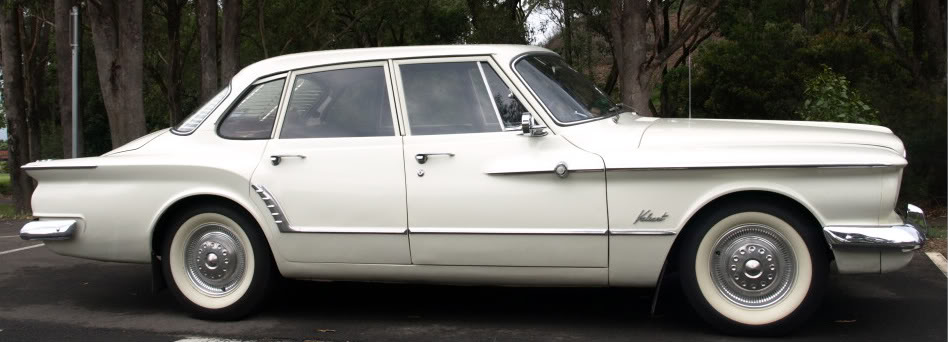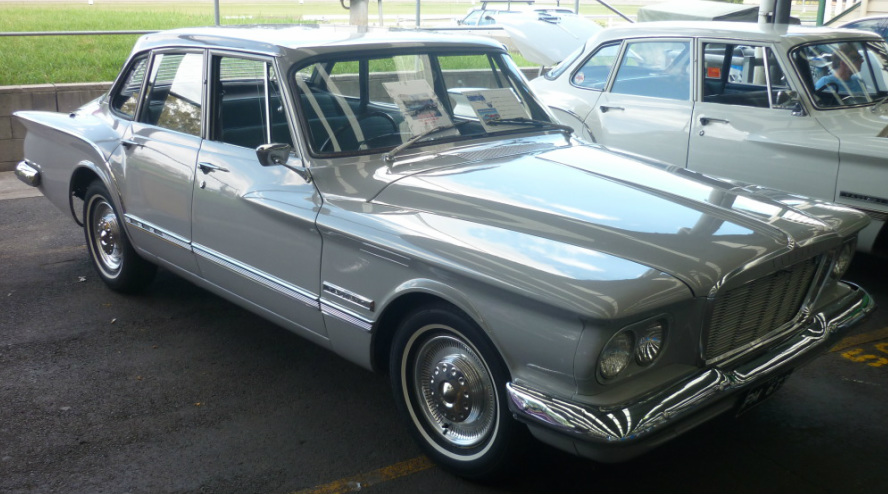Australian 1962 Valiants
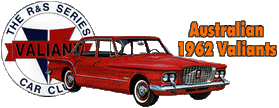
The Valiant was first introduced into Australia in January of 1962. They were fully imported from the USA and were locally assembled. Known as the "R" Series, the Valiant was an instant success in a market where people wanted cars that were roomy enough for the whole family, but not tanks. They were impressed by the Valiants performance - 145 bhp from a six cylinder engine.
This was a lot of power when you consider the Holdens and the Fords of the time had only 75 and 85 respectively. Whilst not everyone was taken instantly by the looks, the general concensus was that the car had a "modern" , almost space age quality about it.
This was a lot of power when you consider the Holdens and the Fords of the time had only 75 and 85 respectively. Whilst not everyone was taken instantly by the looks, the general concensus was that the car had a "modern" , almost space age quality about it.
R Series
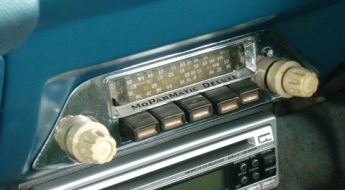
The Engine......
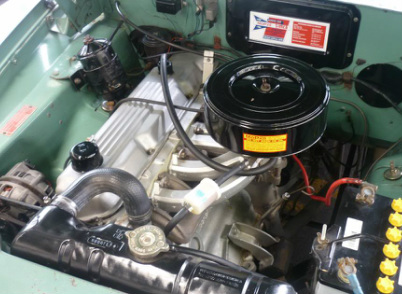
On the engine front was the unstoppable 225 Slant Six. To this day renowned as one of the most reliable, never say die engines ever built. In America, Valiants could come standard with a 170 cu.in engine, and there was also the option of an Aluminium Slant Six. In the land of OZ however, it was the cast 225 with a single barrel Carter Ball & Ball Carburettor doing all the breathing. It was stated that because the engine was inclined to the right at an angle of 30 degrees a lower hoodline was permitted, and it also allowed for an efficient inlet manifold with long branches. The starter motor is a "Chrysler" brand starter, used on the 1962 Valiants and later V8's. For the first time an Australian car came with an alternator instead of a generator, and instead of coil springs, the Valiant came with torsion bar suspension. Brakes were hydraulic drums, front and rear and the spare wheel mould on the boot was just that....a mould. The "real" wheel sat in a well in the boot.
There were 1,008 R Series Valiants sold, and demand well exceeded supply. It was in March of 1962 that Chrysler introduced the tidied up version - the "S" Series Valiant
There were 1,008 R Series Valiants sold, and demand well exceeded supply. It was in March of 1962 that Chrysler introduced the tidied up version - the "S" Series Valiant
S Series
The S Series Valiants were very similar in appearance to the R models with outward cosmetic changes distinguishing it at a distance. Gone was the fake wheel mould on the boot lid, replaced by a neat chromed emblem bearing the word "VALIANT". The "cat's eyes" tail lights on the R were gone, and instead a more conventional tail light lens and indicator assembly used. The chequered grille was now very neat looking and side chrome work was slightly changed also. The floor mounted manual shift was now on the steering column and various other mechanical differences such as bottom ball joints now of a design that would continue throughout the Valiant range for years. To see just some of the differences between to two models CLICK HERE.
They sold 10,009 S Series Valiants, and again were inundated with orders.
They sold 10,009 S Series Valiants, and again were inundated with orders.
The U.S cars
In America, you could buy a Valiant from 1960 - 62. They were designated the "Valiant" ( Q Series ) and the R, but the so-called Q Series was actually a model all on it's own. Designated the QX-1, it was simply named "Valiant". Whilst marketed here as a 1962 model, the R Series cars were in fact American 1961 model cars. It's successor - the S Series - was a true 1962 Valiant, both here an abroad.
In the U.S you could order a Station Wagon version or even a 2 door hardtop. You could have a Signet 200, the Valiant upmarket model, or, if you bought a Dodge Lancer, which was basically the same car, a GT model. The Valiant never came out with a V8, but if you wanted a bit more "pep" in your engine compartment, you could always take advantage of Chryslers "HYPER PAK" option, which utilised an incredibly long ram tuned intake manifold and 4 barrell carburettor. This, along with some other changes, made it a very competitive vehicle. As mentioned earlier, you could also obtain an Aluminium 225, a keenly sought after collectors item today.
In the U.S you could order a Station Wagon version or even a 2 door hardtop. You could have a Signet 200, the Valiant upmarket model, or, if you bought a Dodge Lancer, which was basically the same car, a GT model. The Valiant never came out with a V8, but if you wanted a bit more "pep" in your engine compartment, you could always take advantage of Chryslers "HYPER PAK" option, which utilised an incredibly long ram tuned intake manifold and 4 barrell carburettor. This, along with some other changes, made it a very competitive vehicle. As mentioned earlier, you could also obtain an Aluminium 225, a keenly sought after collectors item today.

